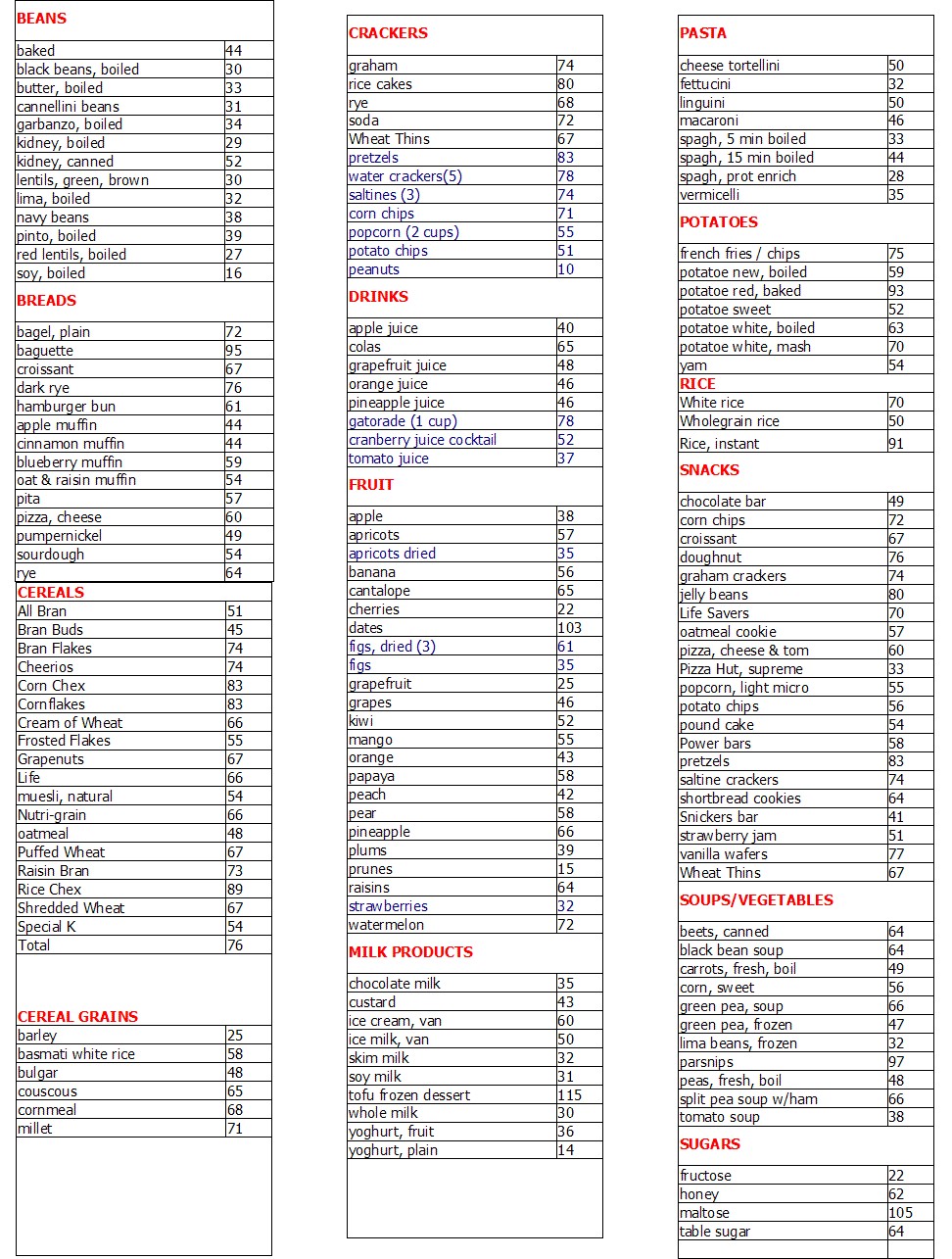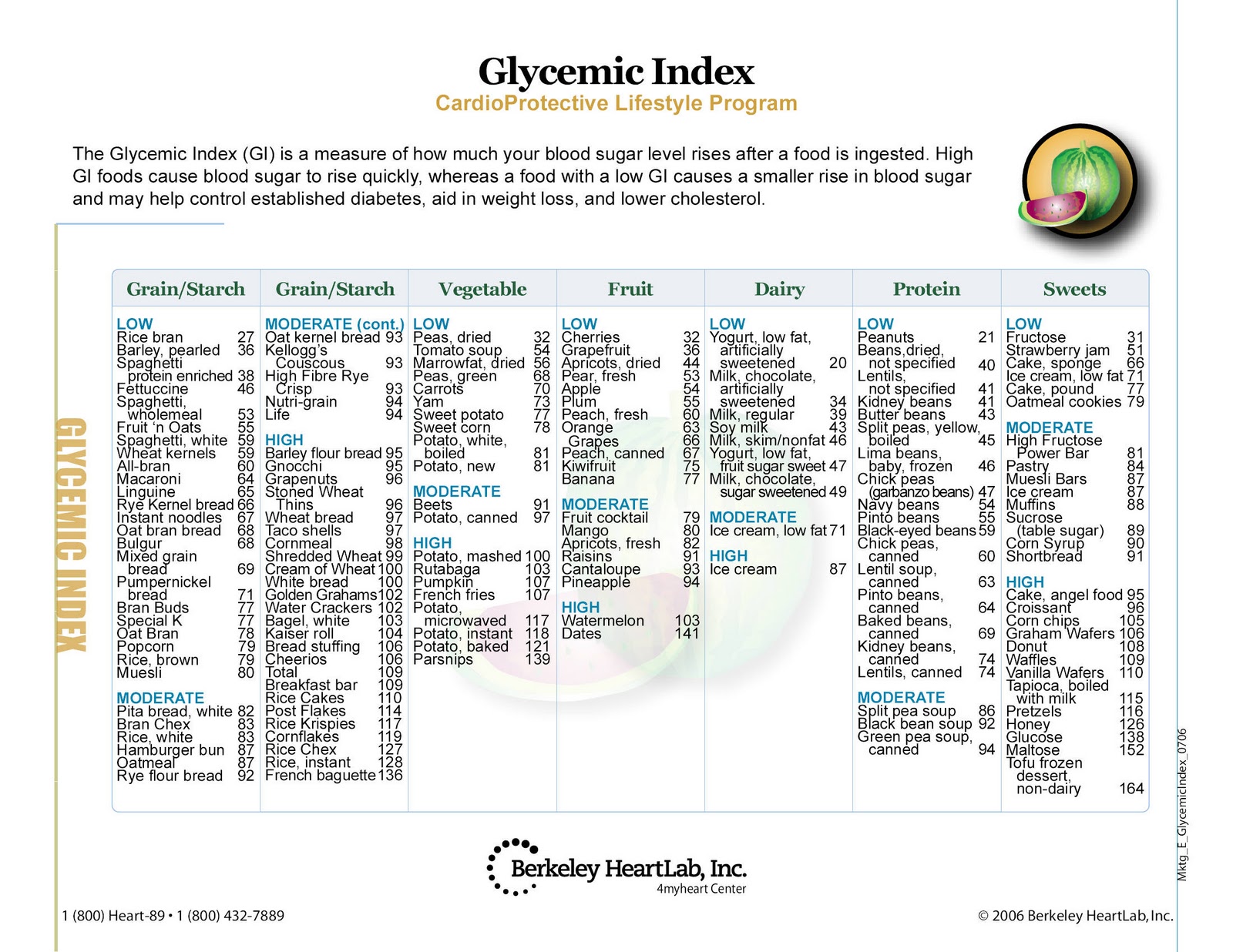Today, I want to talk about something that is very important for our health - the glycemic index. Have you heard about it before? If not, don’t worry! I am here to explain everything in detail. The glycemic index is a ranking system for carbohydrates based on their effect on blood sugar levels. It measures how quickly carbohydrates are digested and absorbed into the bloodstream, and how much they raise blood sugar levels compared to pure glucose.
Glycemic Index Chart
 This image shows a glycemic index chart. It categorizes different types of food based on their glycemic index values. Foods with a high glycemic index (GI) are rapidly digested and cause a sharp increase in blood sugar levels. On the other hand, foods with a low GI are digested slowly, resulting in a gradual and steady rise in blood sugar levels. It is important to consume foods with a low GI, as they provide sustained energy and help in maintaining stable blood sugar levels.
This image shows a glycemic index chart. It categorizes different types of food based on their glycemic index values. Foods with a high glycemic index (GI) are rapidly digested and cause a sharp increase in blood sugar levels. On the other hand, foods with a low GI are digested slowly, resulting in a gradual and steady rise in blood sugar levels. It is important to consume foods with a low GI, as they provide sustained energy and help in maintaining stable blood sugar levels.
Low Glycemic Index Foods - The Safe Route
 This image illustrates a personalized weight loss program that emphasizes the consumption of low glycemic index foods. Low GI foods not only aid in weight loss but also help in managing various health conditions, including diabetes. Some examples of low GI foods include whole grains, legumes, non-starchy vegetables, and lean proteins. These foods provide a steady and sustained release of energy, which is beneficial for our overall well-being.
This image illustrates a personalized weight loss program that emphasizes the consumption of low glycemic index foods. Low GI foods not only aid in weight loss but also help in managing various health conditions, including diabetes. Some examples of low GI foods include whole grains, legumes, non-starchy vegetables, and lean proteins. These foods provide a steady and sustained release of energy, which is beneficial for our overall well-being.
Understanding Glycemic Index & Glycemic Load
 This image showcases the relationship between glycemic index and glycemic load. While the GI measures the quality of carbohydrates, the glycemic load (GL) takes into account both the quality and quantity of carbohydrates in a particular food. GL provides a more accurate representation of a food’s effect on blood sugar levels. It is calculated by multiplying the GI of a food by the amount of carbohydrates in a serving and dividing it by 100. By considering both the GI and GL, we can make informed choices about the foods we consume.
This image showcases the relationship between glycemic index and glycemic load. While the GI measures the quality of carbohydrates, the glycemic load (GL) takes into account both the quality and quantity of carbohydrates in a particular food. GL provides a more accurate representation of a food’s effect on blood sugar levels. It is calculated by multiplying the GI of a food by the amount of carbohydrates in a serving and dividing it by 100. By considering both the GI and GL, we can make informed choices about the foods we consume.
The Importance of a Glycemic Index Food List
 This image presents a glycemic index food list, which is a valuable resource for individuals looking to follow a low GI diet. It provides a comprehensive list of foods and their corresponding GI values. By referring to this list, we can plan our meals and snacks to include primarily low GI foods. This can help with weight management, blood sugar control, and overall health improvement. It empowers us to make conscious choices about the foods we consume and enables us to prioritize our well-being.
This image presents a glycemic index food list, which is a valuable resource for individuals looking to follow a low GI diet. It provides a comprehensive list of foods and their corresponding GI values. By referring to this list, we can plan our meals and snacks to include primarily low GI foods. This can help with weight management, blood sugar control, and overall health improvement. It empowers us to make conscious choices about the foods we consume and enables us to prioritize our well-being.
Now that we have a good understanding of the glycemic index and its significance, we can make more informed decisions about our dietary choices. Remember, incorporating low GI foods into our meals can have a positive impact on our health and well-being. So, let’s strive to include more whole grains, legumes, and non-starchy vegetables in our diet and enjoy the benefits of stable blood sugar levels and sustainable energy throughout the day. Take care of your health and make smart choices!